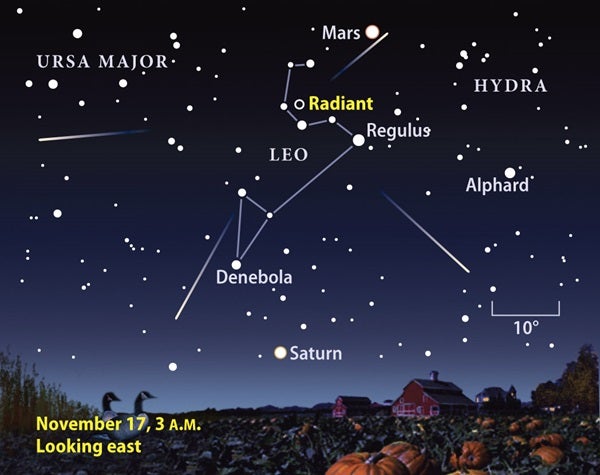According to Astronomy Senior Editor Richard Talcott, “If the weather cooperates, viewing conditions should be nearly ideal. Observers normally can see 20 to 30 meteors per hour at the peak, but rates could spike considerably this year.”
These meteors started out as tiny specks of dust and debris ejected by Comet 55P/Tempel-Tuttle during its countless trips around the Sun. Over time, these particles spread out along the comet’s orbit. Every November, Earth passes through this stream of dust.
The particles hit our atmosphere at 147,000 mph (238,000 km/h) and vaporize because of friction with the air. This produces the streaks of light in the sky we call meteors. If you trace all the shower’s meteor paths backward, they appear to emanate from the constellation Leo the Lion (hence the name Leonid).
Astronomers predict that we should enjoy enhanced meteor rates November 17, most likely between about 1:30 a.m. EST and sunrise. Another rate increase — with numbers reaching 500 meteors per hour for brief periods — may happen later that day, timed well for observers across Asia. The higher rates arise because that’s when Earth passes through the thickest part of the debris trail comet Tempel-Tuttle left behind.
Although the high estimates may make observers salivate, predicting the number of meteors is akin to predicting the number of snowflakes in a storm. Lucky observers could see hundreds of meteors, but unluckier ones might see only a dozen.
“But one thing is certain,” says Talcott. “If you’re not outside on November 17, you’ll miss the whole show.
- Weekly observing podcast: Leonid meteor shower, Silver Coin Galaxy, and IC 1613
- StarDome: Locate the shower’s radiant in your night sky with our interactive star chart.
- Sign up for our free weekly e-mail newsletter.










